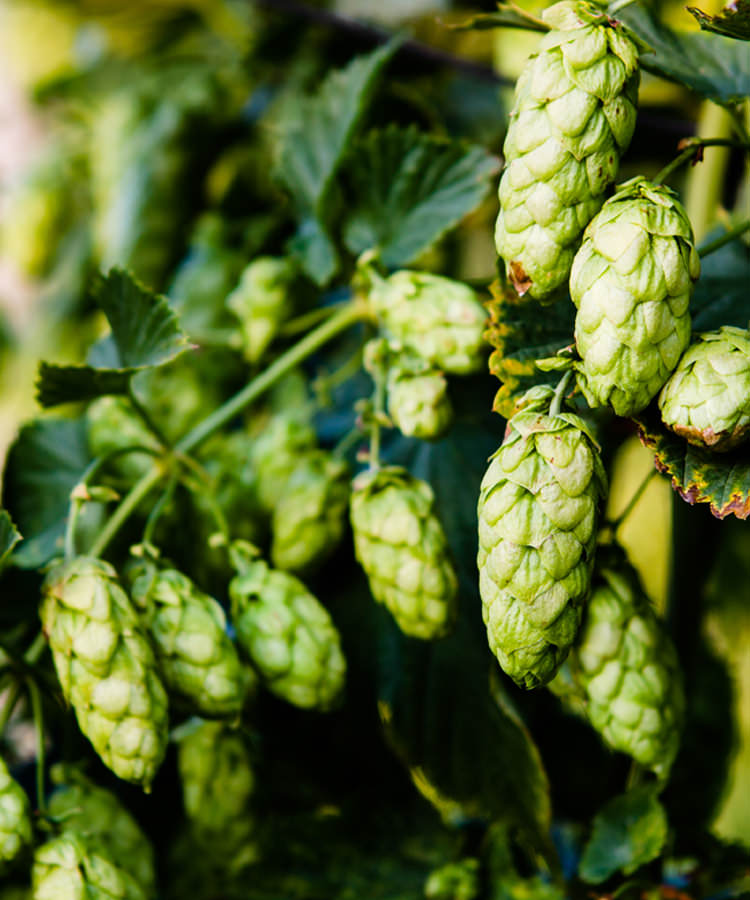Every year as summer fades into fall, a new crop of beers starts to pop up in American taprooms. Fresh hop and wet hop beers now regularly sit alongside the dry hopped (and, more recently, double dry hopped) IPAs released by innovative brewers. Servers often encourage you to taste the fresh and dry hop beers as soon as you can because they come but once a year and expire quickly.
What gives? What is a dry versus wet versus fresh hop beer, and how long does each of them last? Most importantly, how does each taste?
It all comes down to the hop harvest from late August through September, when hop bines are cut and the hop cones for the year are processed. The annual hop harvest is as special of a time for brewers as the grape harvest is for vintners. For brewers, the Pacific Northwest, where more than 75 percent of American hops are grown, is akin to Northern California wine country.
Here’s what you need to know about the wet, fresh, and dry hop beers coming directly from the hop harvest.
Understanding dry hopping versus dried hops
Dried hops comprise the majority of hop production in America, so most hops that are harvested are dried right after being picked. On a trip to the hop farms in Yakima in 2016, I saw firsthand how hop farmers work 24 hours a day picking hops to clear the fields. Picked hops are moved to drying rooms, where they are spread across the floor and dried with hot air.
Once they’re dry, the hops are shaped into small, rabbit-food-looking pellets. These nuggets remain usable for up to three years. (A smaller amount of hops are dried and kept in whole cones, which stay fresh for approximately one year.) Most beer you taste in cans, bottles, or taps is made with these dried hop pellets.
Meanwhile, a beer that says “dry hopped” isn’t talking about dried hops. Dry hopping (as a verb) is a step in the brewing process. Brewers add hops after the boil to give beer an aromatic, hoppy aroma without the bitter flavors that characterize many hoppy beers. (That bitterness comes before the dry hopping, when hops are added during the boil and the oils and aromatics break down.)
Fresh hop versus wet hop beer
Fresh and wet hop beers are brewed during and shortly after the harvest season, and they have a short shelf life. To clarify, in neither category are the hops literally wet. According to the Brewers Association Style Guidelines, to qualify as “fresh or wet hop beer,” beers must be “hopped with freshly harvested hops either undried (wet) or kilned (dried).”
In 2016, Jaki Brophy, a member of the Hop Growers of America and the Washington Hop Commission, told BeerAdvocate that “wet hops are just that — wet, unkilned hops.” Fresh hops are kiln-dried and used as whole cones during the brewing process.
I saw fresh hop harvesting and beer-making firsthand in Washington’s Yakima Valley last year. Here’s how it works: Brewers analyze the moisture level of hop cones by picking one or two off the bine, rubbing them between their hands to warm and break them, and then sniffing them. After brushing off the plant matter, a sticky yellow residue remains. Those cones have high levels of. acids, oils, and aromatics, all of which impart unique flavor profiles to beer as it’s being brewed.
Several factors make fresh hops beers uniquely challenging for brewers and desirable for hops enthusiasts. Fresh hops are less concentrated, so it takes more of them to achieve the same flavor as a beer made with dried and pelletized hops. Fresh hops also provide distinctively grassy, plant-like, and “green” flavor profiles without the bitterness we associate with IPAs and other beers featuring copious dried hops.
Additionally, fresh hops expire extremely quickly and need to be used roughly within 24 hours of harvest. Yakima in Washington and Oregon’s Willamette Valley grow the vast majority of American hops, so you’re more likely to see breweries in the Pacific Northwest use freshly harvested hops.
Whether a brewery defines its fresh or wet hops beers using the Brewers Association’s definition varies by brewery. Great Divide Brewing Company makes a beer called Fresh Hop that’s “brewed in the fall with wet, whole cone hops.” Bale Breaker Brewing Company, which is located in the middle of a hop farm in Yakima, also brews a wet hop beer that it calls simply fresh hop with the name Piled High Imperial Fresh Hop.
Founders Brewing Company, on the other hand, uses wet hops on the front of the label to describe its fresh hop beer Harvest Ale.
Breweries have become more uniform on using “wet” undried hops in beers labeled as fresh hopped, but it’s always good to check if the brewer used dried whole cones shortly after they were harvested or hop cones that were picked within 24 hours of the brewing.
Most importantly, though, you should drink fresh, wet hop beer whenever you have the chance. The opportunity presents itself but once a year.
